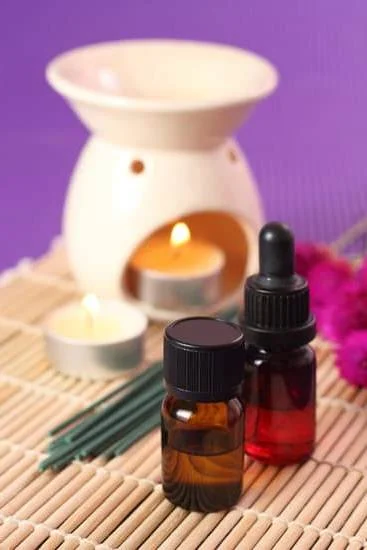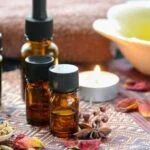Aromatherapy has been used for centuries as a natural way to promote relaxation, improve mood, and enhance overall well-being. The power of essential oils, derived from plants and flowers, is at the heart of this ancient practice. In this article, we will explore how to make aromatherapy products that can bring the benefits of these oils into your home.
Whether you’re new to aromatherapy or have dabbled in it before, understanding the basics is key to making your own products. Essential oils are highly concentrated plant extracts that capture the essence and aroma of their source. Each oil comes with its own unique properties and potential health benefits, which we will delve into throughout this guide.
Making your own aromatherapy products offers many advantages over store-bought options. Not only does it allow you to customize scents and blends according to your preferences, but it also gives you full control over the quality of ingredients used. By using pure essential oils and natural materials, you can ensure that your homemade creations are free from harsh chemicals or synthetic fragrances that may be found in commercial products.
In the following paragraphs, we will take a closer look at the world of aromatherapy and why taking a DIY approach is worth considering. We will explore different essential oils commonly used in aromatherapy and provide safety guidelines for handling them. Additionally, we’ll discuss the tools and ingredients needed to get started on your homemade aromatherapy journey. So let’s dive in and unlock the power of essential oils together.
The Benefits of Making Your Own Aromatherapy Products
Making your own aromatherapy products can bring a multitude of benefits to both your physical and mental well-being. In this section, we will explore why opting for DIY aromatherapy is worth it and how it can enhance your overall experience with essential oils.
- Personalization: One of the main advantages of making your own aromatherapy products is the ability to personalize them according to your preferences and needs. By creating your own blends, you have control over the scents and strengths of the essential oils used, allowing you to tailor the products specifically for yourself or those you are making them for.
Whether you want a calming blend for relaxation or an invigorating one for energy, DIY aromatherapy enables you to customize your creations and experience their full effect. - Cost-effectiveness: Another compelling reason to make your own aromatherapy products is that it can save you money in the long run. Store-bought products often come with hefty price tags due to various factors such as packaging, branding, and marketing expenses.
By taking matters into your own hands, you can significantly cut down on these costs and invest in high-quality essential oils instead. With a few simple ingredients and tools, you can create multiple batches of products at a fraction of the cost compared to buying them pre-made. - Health Consciousness: When crafting homemade aromatherapy products, you have complete control over the ingredients used, ensuring that they are natural and free from any harmful additives or chemicals. This level of transparency allows you to prioritize health consciousness by avoiding synthetic fragrances or potential irritants that may be present in commercial alternatives. Making your own products empowers you to create pure and therapeutic blends that contribute positively to your overall well-being.
By choosing to make your own aromatherapy products, you unlock the power of personalization, save money in the long run, and prioritize health consciousness. Now that we understand why DIY aromatherapy is worth it, let’s explore the different essential oils commonly used in aromatherapy and how they can benefit your mind and body.
Essential Oils Demystified
Essential oils are the backbone of aromatherapy products and understanding their properties is essential to creating effective blends. In this section, we will explore some of the most commonly used essential oils and their benefits.
- Lavender: Known for its calming and relaxing effects, lavender essential oil is a popular choice in aromatherapy. It can help relieve stress, promote sleep, and soothe anxiety. Lavender oil is also known for its antiseptic properties, making it a great addition to skincare products.
- Peppermint: With its invigorating scent, peppermint essential oil is often used to boost energy levels and improve concentration. It can also help alleviate headaches and relieve nausea. When used topically, peppermint oil provides a cooling sensation that can soothe sore muscles and joint pain.
- Eucalyptus: Eucalyptus essential oil is well-known for its respiratory benefits. It can help clear congestion and support healthy breathing. This oil also has antimicrobial properties, making it useful for disinfecting surfaces or promoting healing in wounds.
- Tea Tree: Tea tree essential oil is commonly used for its antibacterial and antifungal properties. It can be an effective treatment for acne, dandruff, and fungal infections like athlete’s foot. This versatile oil can also be added to DIY cleaning products for its germ-fighting abilities.
- Lemon: Lemon essential oil has a refreshing citrus scent that is uplifting and energizing. It is often used as a natural air freshener or added to cleaning products for its antibacterial properties. Lemon oil may also promote focus and mental clarity when diffused or applied topically.
These are just a few examples of the many essential oils available for use in aromatherapy products. Each oil offers unique benefits, so it’s important to research their individual properties before incorporating them into your blends.
Safety First
Essential oils are powerful substances that require careful handling and proper precautions to ensure safety. Here are some key guidelines and precautions to keep in mind when working with essential oils:
- Dilution: Essential oils should always be diluted before use, especially when applying them topically. Most essential oils are highly concentrated and can cause skin irritation or sensitization if used undiluted. It is recommended to mix essential oils with a carrier oil, such as coconut oil or almond oil, at a safe dilution ratio of 2-3% for adults and even less for children or those with sensitive skin.
- Patch Testing: Before using a new essential oil, it is important to conduct a patch test on a small area of skin to check for any adverse reactions. Apply a small amount of diluted oil on the inner forearm or wrist and wait for 24 hours. If there is no redness, swelling, itching, or discomfort, it is generally safe to use the oil.
- Pregnancy and Children: Some essential oils may not be suitable for use during pregnancy or for young children due to their strong chemical components that could potentially affect hormonal balance or be too harsh on delicate skin. It is crucial to consult healthcare professionals or qualified aromatherapists before using any essential oils if you are pregnant or have children.
- Phototoxicity: Certain citrus essential oils such as lemon, lime, bergamot, grapefruit, and orange can cause increased sensitivity to sunlight and lead to sunburns or rashes when exposed to UV rays after application. To avoid phototoxic reactions, it is advisable not to apply these oils topically before going outdoors.
- Storage: Essential oils should be stored in dark glass bottles in cool and dry places away from direct sunlight or heat sources. Always make sure the bottles are tightly closed after each use to prevent oxidation and maintain the quality of the oils.
By following these safety precautions and guidelines, you can ensure a safe and enjoyable experience when working with essential oils. It is also important to continuously educate yourself about each essential oil’s specific properties, potential contraindications, and different extraction methods to better understand their safe usage. Remember that safety should always be the top priority when handling these powerful natural substances.
Essential Tools and Ingredients
To get started in aromatherapy, you will need a few essential tools and ingredients. These items are necessary for creating your own aromatherapy products at home. Here is a list of what you will need:
- Essential Oils: Essential oils are the foundation of any aromatherapy product. These highly concentrated plant extracts have powerful therapeutic properties and give each product its unique scent. There are many different essential oils to choose from, each with its own benefits and uses. Some commonly used essential oils include lavender, peppermint, eucalyptus, and tea tree.
- Carrier Oils: Carrier oils are used to dilute essential oils before applying them to the skin. They help to “carry” the essential oil onto the skin and prevent irritation or sensitization. Common carrier oils include sweet almond oil, jojoba oil, coconut oil, and grapeseed oil.
- Containers: You will need suitable containers to store your homemade aromatherapy products. Depending on the type of product you want to make, you may need bottles with droppers for massage oils or roll-on bottles for perfumes. Make sure that the containers you choose are made of glass or UV-protected materials to preserve the integrity of the essential oils.
- Mixing Tools: To create your aromatherapy blends, you will need some basic mixing tools such as glass droppers or pipettes for measuring out precise amounts of essential oils and carrier oils. You may also find it helpful to have a small funnel for transferring liquids into bottles without spills.
- Labels: It’s important to label your homemade products accurately so that you can identify them easily and keep track of their expiration dates. You can create your labels using waterproof adhesive labels or simply write on the container with a permanent marker.
Having these tools and ingredients on hand will allow you to start making your own aromatherapy products at home easily. Experiment with different essential oil blends and carrier oils to find what works best for you. Remember to always follow proper safety guidelines when working with essential oils, and enjoy the process of creating your own personalized aromatherapy products.
A Step-by-Step Guide
Gather Your Materials
Before you can start making your aromatherapy products, it’s important to gather all the necessary materials and ingredients. Here are some essential tools and ingredients you’ll need:
- Essential oils: Choose high-quality essential oils that suit your needs and preferences. Some popular choices include lavender, peppermint, eucalyptus, and lemon.
- Carrier oils: These are used to dilute the essential oils and provide a base for your products. Common carrier oils include jojoba oil, sweet almond oil, coconut oil, and avocado oil.
- Other ingredients: Depending on the specific product you want to make, you may also need other ingredients such as beeswax, shea butter, clay or activated charcoal (for face masks), dried herbs or flowers, and natural preservatives.
- Mixing utensils: Have separate glass droppers or pipettes for each essential oil to avoid cross-contamination. You’ll also need glass jars or bottles with tight-fitting lids to store your finished products.
- Labels and packaging: Don’t forget to have labels and appropriate packaging for your aromatherapy products. Clear labels with the name of the product, date of creation, and list of ingredients are crucial for safety and identification.
Choose Your Recipe
Once you have all your materials ready, it’s time to choose a recipe for your desired aromatherapy product. Whether it’s a relaxing bath oil, invigorating room spray, or soothing massage blend – there are countless recipes available online or in books dedicated to aromatherapy.
When selecting a recipe, consider the purpose or intended effect of the product you want to create. Are you looking for stress relief? Better sleep? Improved focus? Different essential oils have different properties that can help achieve these goals.
Follow the Step-by-Step Instructions
Now that you have your materials and recipe, it’s time to start making your aromatherapy product. Follow the step-by-step instructions provided in your chosen recipe carefully.
Pay attention to the measurements, ratios, and order of adding ingredients. Mixing essential oils with carrier oils and other ingredients requires precision to ensure safety and effectiveness. Remember to use separate utensils for each ingredient to prevent contamination.
As you follow the instructions, take note of any specific recommendations for storage or usage. Some products may require refrigeration, while others may have certain usage guidelines (e.g., diluting before applying to the skin).
By following a reliable recipe and methodically carrying out each step, you’ll be able to create your own personalized aromatherapy products that are safe and effective for your well-being.
DIY Aromatherapy Recipes
Relaxation Blend
One of the most popular uses for aromatherapy is promoting relaxation and reducing stress. To create a soothing blend, combine 10 drops of lavender essential oil, 5 drops of chamomile essential oil, and 3 drops of bergamot essential oil.
You can mix these oils together in a roller bottle with a carrier oil such as jojoba or sweet almond oil for easy application. Apply the blend to your pulse points or use it in a diffuser to create a calming atmosphere.
Energizing Blend
If you’re feeling tired or need a pick-me-up, an energizing blend can help give you a boost of energy and mental focus. Try combining 8 drops of peppermint essential oil, 4 drops of rosemary essential oil, and 4 drops of lemon essential oil. This invigorating blend can be added to a diffuser or mixed with a carrier oil for massage or inhalation.
Immunity Support Blend
To support your immune system and ward off seasonal threats, create an immunity support blend using essential oils known for their antiviral and antibacterial properties. Combine 6 drops each of tea tree essential oil and eucalyptus essential oil, along with 4 drops of lemon essential oil. Add this blend to a diffuser or dilute it in water as a surface cleaner.
Sleep Aid Blend
For those struggling with insomnia or just wanting better quality sleep, try making an aromatherapy sleep aid blend. Combine 8 drops of lavender essential oil, 4 drops of cedarwood essential oil, and 4 drops of roman chamomile essential oil. Apply this mixture to your pillowcase before bedtime or use it in a diffuser beside your bed for a restful night’s sleep.
Mood-Boosting Blend
If you’re looking for a scent that can lift your spirits and improve your mood, try creating a mood-boosting blend. Combine 6 drops of bergamot essential oil, 5 drops of sweet orange essential oil, and 4 drops of ylang-ylang essential oil. Use this blend in a diffuser or mix it with a carrier oil to create your own personal perfume.
These aromatherapy blends are just a starting point, and you can customize them according to your preferences. Experiment with different combinations of essential oils to create unique scents that cater to your specific needs and desires. Remember to always dilute the essential oils properly before use and perform a patch test on your skin to check for any sensitivities or allergies.
By incorporating these DIY aromatherapy blends into your daily routine, you can experience the therapeutic benefits of aroma while enjoying the delightful scents created by nature’s powerhouse – essential oils.
Incorporating Aromatherapy into Your Daily Routine
Aromatherapy can offer a wide range of benefits for both the mind and body, making it a powerful tool for enhancing your overall well-being. Once you have learned how to make your own aromatherapy products at home, it’s important to know how to incorporate them into your daily routine effectively. By doing so, you can maximize the therapeutic effects and create a personalized experience that suits your needs.
One practical tip for incorporating aromatherapy into your daily routine is to start your day with an energizing blend of essential oils. Citrus oils such as lemon, orange, or grapefruit can help uplift your mood and promote a sense of alertness.
You can add a few drops to an essential oil diffuser or create a custom blend by combining these oils in a roller bottle with a carrier oil such as jojoba or almond oil. Apply the blend onto your wrists or temple area for an invigorating start to your day.
Another idea is to use aromatherapy as part of your self-care rituals in the evening. Essential oils like lavender or chamomile are known for their calming properties and can help promote relaxation and better sleep quality.
Create a bedtime routine by diffusing these oils in your bedroom before sleep or adding them to a warm bath for a soothing experience. You can also create your own homemade linen spray using these oils by combining them with distilled water in a spray bottle and lightly misting it onto your pillowcases before bed.
Additionally, consider using aromatherapy during moments of stress or tension throughout the day. Peppermint oil has been shown to have uplifting qualities that can help relieve tension headaches and increase focus. Keep a small bottle of peppermint essential oil in your bag or workspace and inhale its aroma whenever you need an instant pick-me-up.
By incorporating aromatherapy into different aspects of your daily routine, you can create a holistic approach to wellness. Experiment with different blends and applications to find what works best for you and remember to listen to your body’s needs. Aromatherapy is a versatile practice that can support your well-being on various levels, so take the time to explore its potential in enhancing your everyday life.
Frequently Asked Questions (FAQs) about Aromatherapy and Making Your Own Products
Aromatherapy and making your own products can be a fascinating and rewarding journey. However, it is natural to have questions along the way. In this section, we will address some frequently asked questions (FAQs) about aromatherapy and making your own products.
- Q: How do I know which essential oils to use for specific purposes?
- A: Choosing the right essential oils for specific purposes depends on their properties and therapeutic benefits. For example, lavender oil is known for its calming and soothing properties, making it great for relaxation and sleep. Peppermint oil, on the other hand, is invigorating and can help with mental clarity and focus. It is always recommended to research or consult a qualified aromatherapist to determine which essential oils are best suited for your needs.
- Q: Can I use any carrier oil in my aromatherapy products?
- A: Carrier oils are used to dilute essential oils before applying them to the skin. While there are various carrier oils available, not all of them are suitable for every purpose or skin type. Some commonly used carrier oils include jojoba oil, almond oil, and coconut oil.
Jojoba oil is well-regarded for its moisturizing properties, almond oil is good for sensitive skin, while coconut oil has antimicrobial properties. It’s important to consider factors such as skin sensitivity, desired viscosity, and other preferences when selecting a carrier oil. - Q: Are there any safety concerns I should be aware of when using essential oils?
- A: Yes, safety precautions should be taken while using essential oils. Essential oils are highly concentrated substances that should never be applied directly to the skin without proper dilution. Before using an essential oil topically or internally, it’s crucial to research its safety guidelines thoroughly.
Some essential oils may cause irritation or allergic reactions in certain individuals. Additionally, pregnant women, infants, and people with certain medical conditions must exercise caution when using essential oils. Always follow the recommended dilution ratios and guidelines for safe use.
By addressing these commonly asked questions, you can gain a better understanding of aromatherapy and the process of making your own products. Remember to seek guidance from experts, conduct proper research, and prioritize safety when venturing into the world of aromatherapy.
The Final Touch
In conclusion, packaging and storing your homemade aromatherapy products is an important final step in the process. Properly packaging and storing your products will ensure their longevity and effectiveness. Here are some key points to keep in mind.
First, consider the type of packaging that is best suited for your specific product. For oils and blends, dark glass bottles are ideal as they help protect the oils from light exposure, which can degrade their quality over time. Additionally, using bottles with a dropper or pump dispenser can make it easier to control the amount of product you use.
When it comes to storing your aromatherapy products, it is crucial to keep them in a cool, dry place away from direct sunlight. Heat and moisture can compromise the integrity and potency of essential oils. It’s also important to label your products clearly with their ingredients, usage instructions, and expiration dates if applicable. This will help you keep track of what you have made and ensure that you use them before they expire.
Lastly, remember to take safety precautions when handling and storing your homemade aromatherapy products. Essential oils are highly concentrated substances that should be kept out of reach of children and pets. If ingested or applied improperly, they can cause harm. Always research the safety guidelines for each essential oil you use and follow them diligently.
By properly packaging and storing your homemade aromatherapy products, you can enjoy their therapeutic benefits for an extended period of time while ensuring safety and efficacy. So take care in this final touch to ensure that your creations continue to bring joy and wellness into your life.
Frequently Asked Questions
How do you make your own aromatherapy?
Making your own aromatherapy products can be a fun and creative process. To start, you will need to gather the necessary materials, including essential oils, carrier oils, and other optional ingredients such as dried herbs or flowers. Essential oils are the key component of aromatherapy, as they contain the concentrated essence of plants and their therapeutic properties.
You can choose specific essential oils based on their desired effects, such as lavender for relaxation or peppermint for energy. Carrier oils like jojoba or almond oil are used to dilute essential oils and ensure they safely penetrate the skin. Once you have your ingredients, you can experiment with different combinations and proportions to create personalized blends that suit your needs and preferences.
Can I sell my own aromatherapy products?
Yes, it is possible to sell your own aromatherapy products if you have the appropriate knowledge and comply with relevant regulations and guidelines. Before selling your products, it’s important to ensure that you fully understand the legal requirements in your jurisdiction regarding product labeling, ingredient information, safety considerations, and any necessary certifications or permits.
It’s also crucial to have a good understanding of proper manufacturing practices to maintain product quality and safety standards. Additionally, conducting thorough research on market demand for aromatherapy products in your target audience can help inform your business strategy and pricing decisions.
What are the ingredients in aromatherapy?
Aromatherapy typically utilizes various ingredients depending on the desired effect and specific product being created. The main components of aromatherapy products include essential oils, carrier oils, hydrosols (also known as floral waters), base ingredients (such as creams or lotions), and optional additives like dried herbs or flowers. Essential oils extracted from plants are at the core of aromatherapy; however, carrier oils play an essential role by diluting the potent essential oils so they are safe for direct application on skin or inhalation. Hydrosols are created during distillation processes when extracting essential oils; they have similar therapeutic properties but are less concentrated.
Base ingredients provide structure and consistency to products like creams or lotions. Optional additives, such as dried herbs or flowers, can be incorporated for visual appeal or additional aromatic benefits. It’s important to note that the specific ingredients used in aromatherapy can vary widely depending on the product being made and personal preferences.

Are you looking for a natural way to improve your health and wellbeing?
If so, aromatherapy may be the answer for you.





